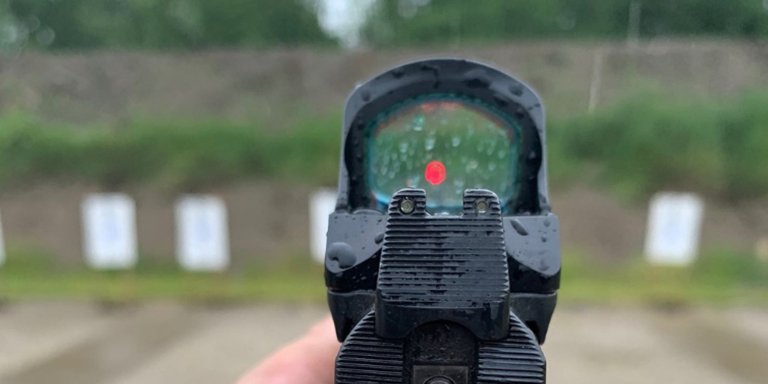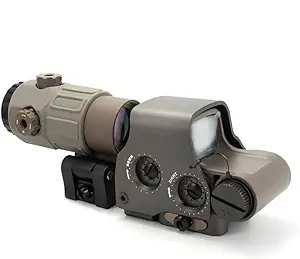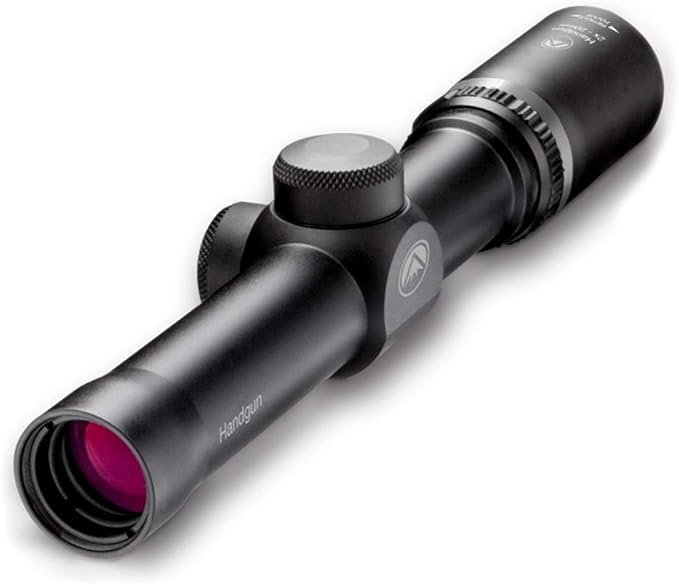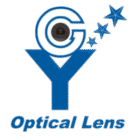Holographic Sight vs Rifle Scope

In this article, I’ll explain how holographic sights and rifle scopes differ, their pros and cons, and how to choose the right optic for your rifle setup.
What Is a Holographic Sight?
A holographic sight uses laser-based technology to project a reticle (aiming point) onto a holographic image inside the sight. Unlike a traditional red dot sight, which reflects an LED onto a lens, holographic optics rely on advanced projection to provide a clearer, parallax-free aiming point. Because of this design, shooters can aim with both eyes open, maintaining full situational awareness — which is crucial in close-quarters or fast-moving environments. Holographic sights are popular among tactical and defense shooters who need to lock onto targets quickly. Common applications include:- Home defense or tactical training
- Close to mid-range shooting
- Competitive or rapid-fire scenarios
What Is a Rifle Scope?
A rifle scope is an optical device that magnifies your target through a series of glass lenses, allowing for high precision at long ranges. Scopes come in various magnification levels, often adjustable, enabling shooters to zoom in for accurate target placement even at distances over 500 yards.
Rifle scopes are favored by hunters, snipers, and marksmen who need precision over distance rather than speed. Many models also include features like parallax adjustment, elevation turrets, and reticle illumination to help maintain accuracy under different lighting conditions. Common applications include:- Long-range hunting and sniping
- Precision target shooting
- Military and tactical operations
Key Differences Between Holographic Sight and Scope
While both devices help with aiming, they work differently and serve unique shooting purposes. Below is a quick breakdown of their main differences:| Feature | Holographic Sight | Rifle Scope |
|---|---|---|
| Range | Short to mid-range | Long-range |
| Magnification | Fixed (1x) | Adjustable (3x–20x+) |
| Speed | Instant target acquisition | Slower but more precise |
| Battery Use | Requires power | Usually battery-free |
| Weight | Lightweight | Heavier and longer |
| Field of View | Wide | Narrow focus |
Pros and Cons of Holographic Sights

- Faster Target Acquisition: The holographic reticle helps you lock onto your target instantly.
- Both Eyes Open Shooting: Ideal for tactical or defensive use.
- Works Well in Low Light: Many models offer reticle illumination options.
- Battery Dependency: Needs power to operate the laser reticle.
- Higher Price: Usually more expensive than standard scopes.
- Limited Range: Not suitable for long-range precision shooting.
Pros and Cons of Rifle Scopes

- Adjustable Zoom: Offers control for different shooting ranges.
- Durable and Reliable: Can function without batteries in most cases.
- Slower Targeting: Aiming takes longer, especially for moving targets.
- Bulky Design: Can add significant weight to your rifle.
- Eye Relief Limitations: Requires precise positioning to avoid blur.
Which One Should You Choose?
The choice between a holographic sight and a rifle scope ultimately depends on your shooting style and purpose.- Tactical / Home Defense: Go for a holographic sight for quick reaction time and faster reticle alignment.
- Hunting / Long-Range Shooting: Choose a rifle scope for magnification and pinpoint accuracy.
- Recreational or Competitive Shooting: Consider your environment, a holographicsight for short-range, scope for distance.
Buying Guide: Holographic Sight vs. Rifle Scope
- Know Your Purpose: Identify your shooting needs before buying.
- Check Compatibility: Ensure your rifle’s rail system supports the optic.
- Consider Weight and Balance: A heavy scope can affect your handling.
- Test Visibility: Look for clear reticle display and minimal distortion.
- Don’t Compromise on Quality: Trusted brands ensure better accuracy and durability.
